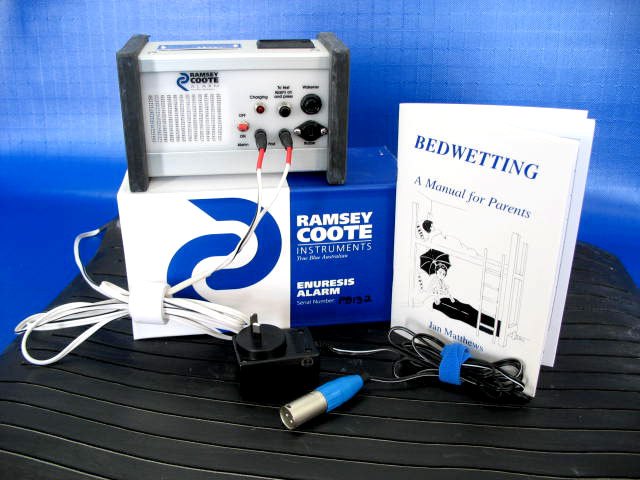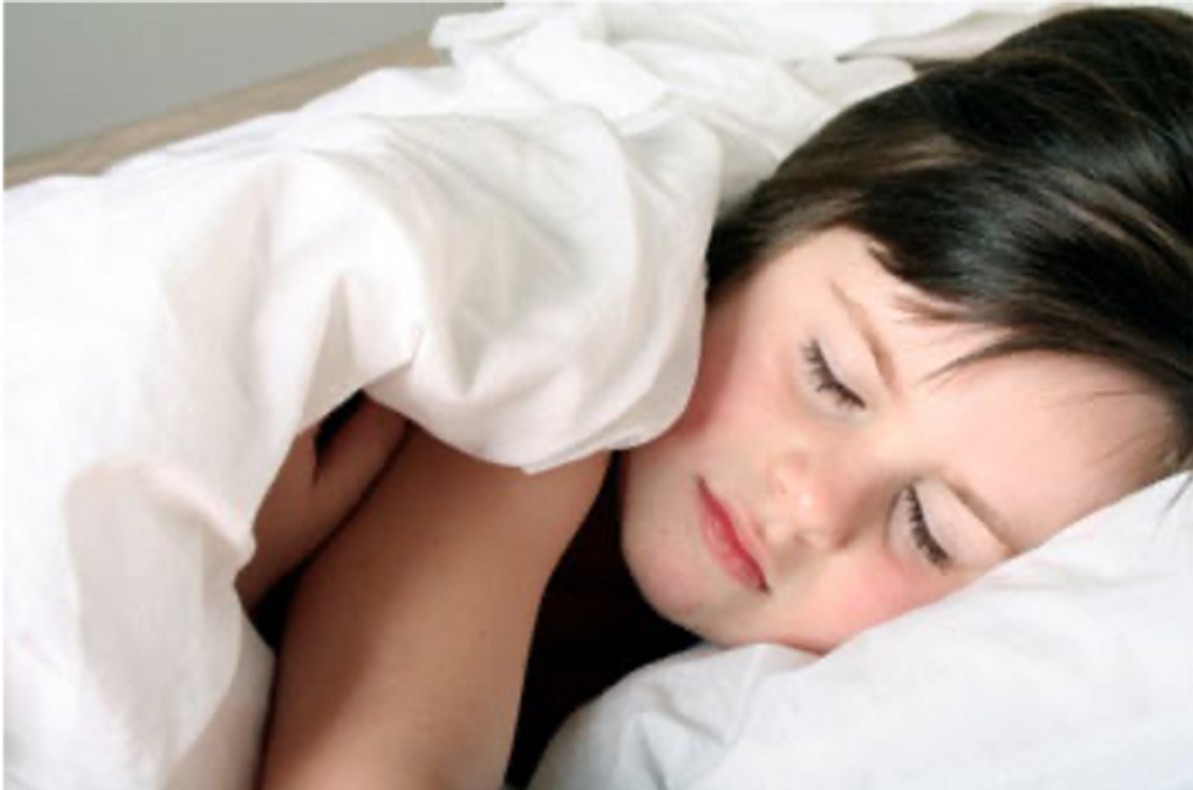Bed Wetting
Bed Wetting

Bedwetting, also called nocturnal enuresis, has implications, which are often underestimated by both the community and those advising on its treatment. It places a huge burden on the whole family, as any parent of a child who wets the bed will testify! Parents often become very distressed and might even suspect that their child is deliberately causing mischief. They are not! Children can become anxious about their own ability to influence the outcome. Try as they might to help, they feel powerless to stop wetting the bed, and in time their self esteem may even suffer. Sleepovers with friends and school camps can become a source of considerable stress to the child. Many parents become resigned to the fact that they are unable to help their child. Doctors are often dismissive, offering only reassurance that the child will eventually outgrow the problem, when the family requires immediate help. Whilst bedwetting is a very common problem, it is often needlessly tolerated because of a certain reluctance to discuss what is an awkward and embarrassing subject for many people.
Don’t just wait for the problem to stop!
All children are different. Just as most of the developmental milestones vary from child to child, so does continence at night. Two thirds of children will have stopped bedwetting completely by five years of age. One third are still wetting at five, with the frequency varying from occasional bedwetting to wetting every night. If your child is five and still wetting regularly then it is time act. The parent must decide when they are ready to do something about the problem rather than waiting for the child to be ready. The first three steps of our program can be used with children as young as four years of age, however, we do not recommend starting a bedwetting alarm until children are about five years old.
Causes & Treatment
Many wonder how to stop bed wetting. Bedwetting has four main causes. Many people treat only one cause, deep sleep. They expect that by using a bedwetting alarm their child will wake to the alarm and stop wetting the bed. This can lead to disappointment. Even when an initial cure is achieved relapses are common. By treating all four causes of bed wetting you are more likely to achieve a permanent cure. Many parents deny that their child has these other problems, however research has shown that these factors affect many children who wet the bed. Unless all these factors are resolved it can be difficult to achieve a permanent cure with a bedwetting alarm alone.
Bed wetting causes
Small bladder
capacity
This means the bladder is not large enough to hold all the urine produced
overnight; this can be improved with our drinking program.
Very deep sleep
This is very common in children who wet the bed. During the night their bladder
sends a message to their brain saying it is full. The child needs to wake up
and get up to the toilet, however they sleep through this signal;
Large volumes of
urine produced at night
Some children produce double the normal amount of urine at night so that even
if their bladder capacity is normal it will not be big enough to hold all the
urine they produce. Overnight these children often have abnormally low levels
of the hormone vasopressin, also called antidiuretic hormone. Vasopressin is a
hormone, which helps to concentrate the urine at night i.e. it reduces the volume
of urine. These hormone levels can return to normal with treatment and
Constipation
This can lead to pressure building up in the area around the bladder reducing
the amount of urine the bladder can comfortably hold. It can also lead to tight
muscles, which stop the bladder from relaxing and emptying fully when it
should. With a bladder left half full it will easily fill up again.
Bedwetting Alarms – three types
- Pad and Bell
- Body Worn – clip on
- Wireless
Body worn alarms
With Pin-on and Clip-on alarms they attach at the shoulder and have a lead which runs down between a singlet and T-shirt to the underpants. The moisture sensor attaches to the underpants.
Wireless Alarms
Wireless alarms have the sound box on the bedside table but a transmitter with sensor attaches to the underpants. This is larger than the sensors on the clip-on alarms. We have found that the wireless alarms are not as reliable as the corded alarms. There may be interference from other wireless products in the house. Also, the electronics are in close proximity to the urine.

We have a Bed Wetting Alarm for Hire here
Pad and Bell alarms
Our Pad and Bell alarms are extremely loud. The sound box goes on the bedside table. The alarm mat goes on top of the fitted sheet. Pad and Bell Alarms are much louder than the body worn alarms. They are recommended for very deep sleepers. Nothing attaches to the child. A wire goes from the alarm mat on the bed to the alarm box on the bedside table. They can be used for children of any age but are the first choice for children aged 9 or older. They are also recommended for children who have previously tried a body worn alarm without success. For children only wetting occasionally the alarm mat can be put under the fitted sheet. The child cannot wear pull-ups with this type of alarm.
Pull-ups
Many doctors and nurses recommend removing pull-ups. All this does is make more work for the parent without actually curing the problem. It is worth trying your child without pull-ups for two weeks every six months to check they are not part of the problem. Use a waterproof mattress overlay instead.. If you want to continue with the pull-ups while using an alarm you can do this with the body worn alarms and the wireless alarms. Use one pair of underpants and put pull-ups over the top. The sensor goes in-between. The pull-ups allow the sensor to get wet and so the alarm sounds but the sheets stay dry making your workload less, which will help you continue with the program. You cannot use pull-ups with the Pad and Bell alarms. Once your child has improved and is wetting about once a week take the pull-ups off and start using one of the waterproof mattress pad overlays.
Medication
Medication should not be a first option. Try the steps on the Bedwetting Cured DVD and a bedwetting alarm first. The most commonly used medication is desmopressin.
There are two ways to try medication.
1.Trial to cure the problem
If the whole family needs a break then try medication for three to six months
along with the steps on the Bedwetting Cured DVD (Contact us for more information). Then wean off the medication
and see if the bedwetting is cured. It rarely works as a complete cure as the
bedwetting often returns when the medication is stopped but it may be needed to
give everyone a break.
2.Cover for short term events
Try the medication for a few weeks to see if it works. If it completely stops
the bedwetting it can then be used in case of schools camps and holidays. If
only a partial improvement occurs then you know it cannot be relied on when
needed.
Is bedwetting more common in boys?
Yes it is more common in boys but is just as much of a problem whether it is in a girl or boy. The treatment is the same in both.
Will I need to purchase any equipment?
A bedwetting alarm may be needed to cure the problem. Washable waterproof
mattress overlays go under the child and prevent the bottom sheet getting wet.
Waterproof quilt covers prevent the quilt getting wet and only need to be
sponged down. They can be machine washed if necessary.
Teenage and adult bedwetting
Our experience has shown treatment can be just as successful with teenagers and adults. Adults need to be aware that alcohol can contribute to bed wetting by suppressing the hormone vasopressin (antidiuretic hormone), which reduces the volume of urine produced at night. Following treatment it should be possible to consume alcohol and not wet the bed.
Bedwetting – What not to do
We do not recommend measuring and charting urine and fluid intake. This is time consuming and messy and will only tell you what you will find out very quickly when you start the drinking program;
Getting children up at night to go to the toilet will not cure the problem even if it leads to a dry bed in the morning. You will still be doing this in a year’s time;
We do not recommend holding on as long as possible before going to the toilet as children tend to leave it until the last possible moment to go. It can discourage them from drinking adequately and can also lead to daytime wetting accidents and
Reducing fluids in the evening without following a comprehensive drinking program will only lead to a thirsty and disgruntled child not a dry bed.
Results
Many parents can hardly believe that their child could be waking to a dry bed every morning. Results from our anonymous survey sent to customers 12 months after purchasing the Bedwetting Cured Kit showed long term results were very good. The worst outcome was a 93% reduction in wet nights and most achieved complete success i.e. no wet nights in the previous six months.
Recent Posts
-
-
RICE: How to Deal with Strains and Sprains
RICE: The How to of Sprain …May 30, 2023 -
Should I Be Taking A Collagen Supplement?
Should I Be Taking a Colla …May 23, 2023

